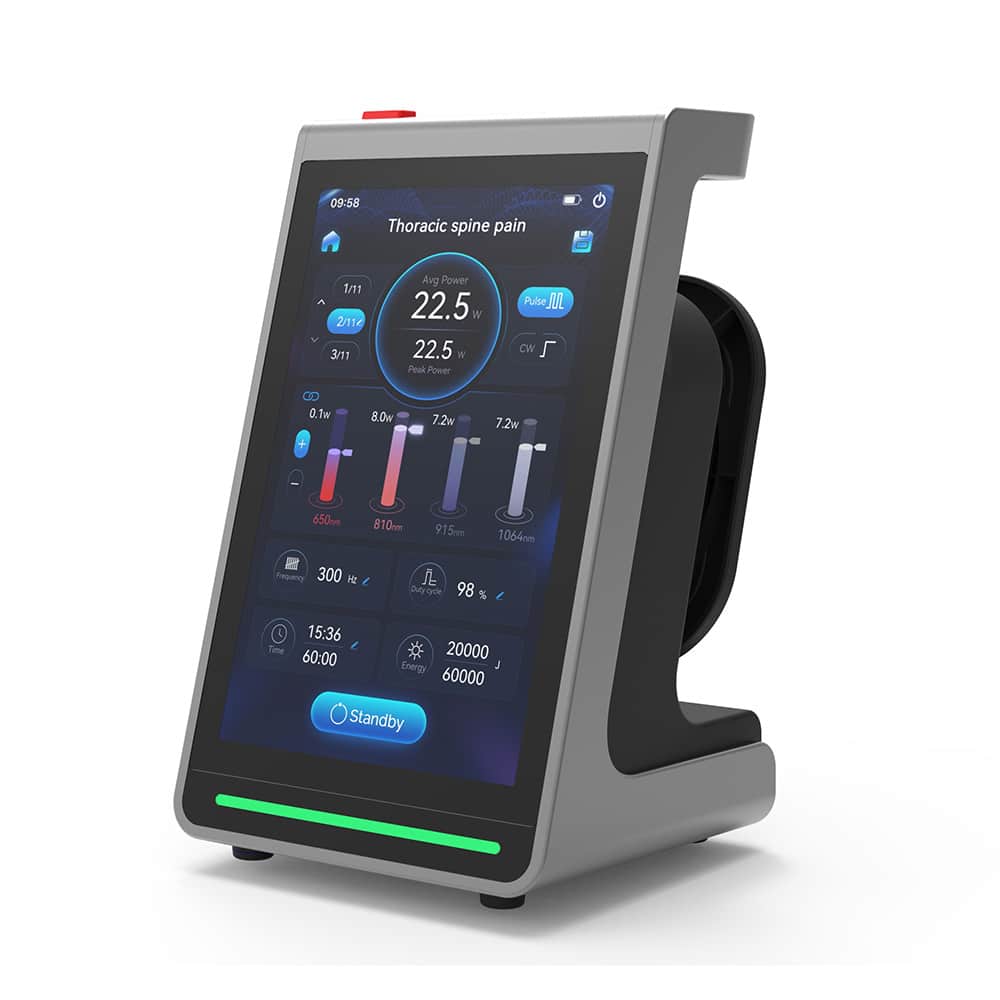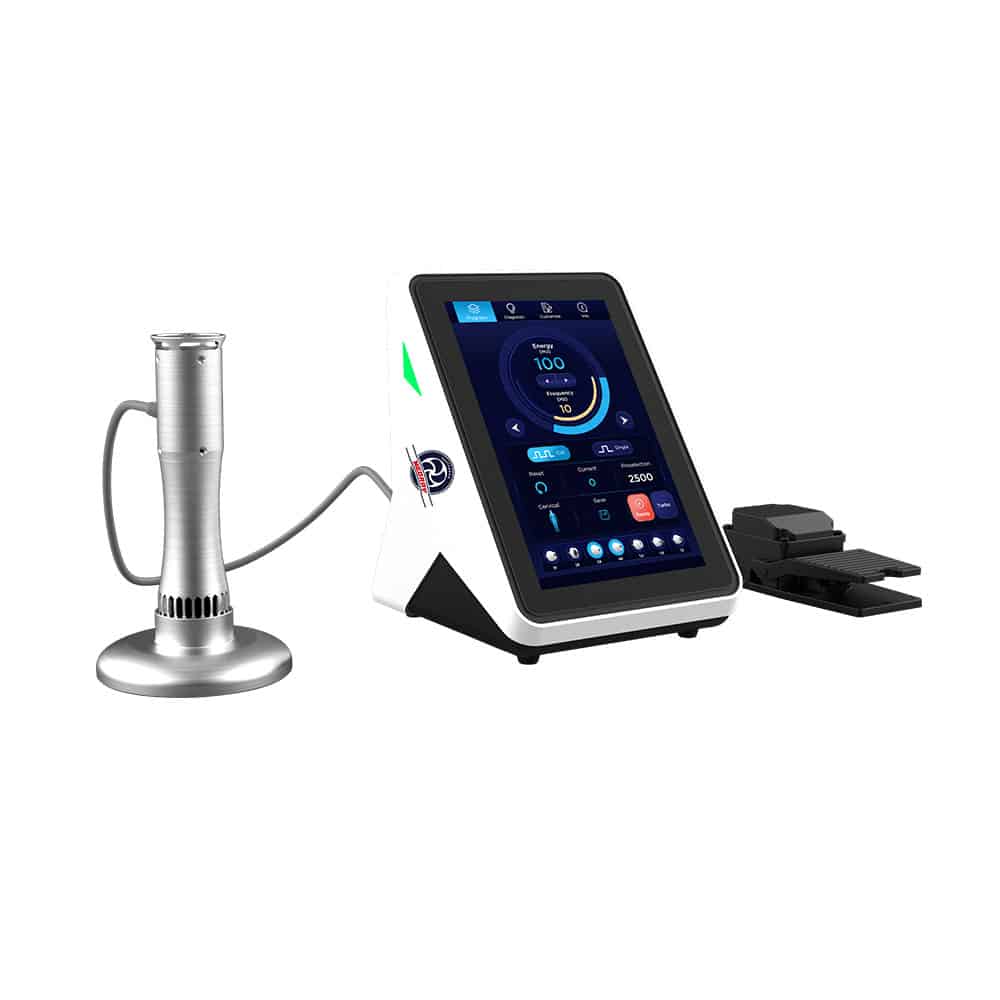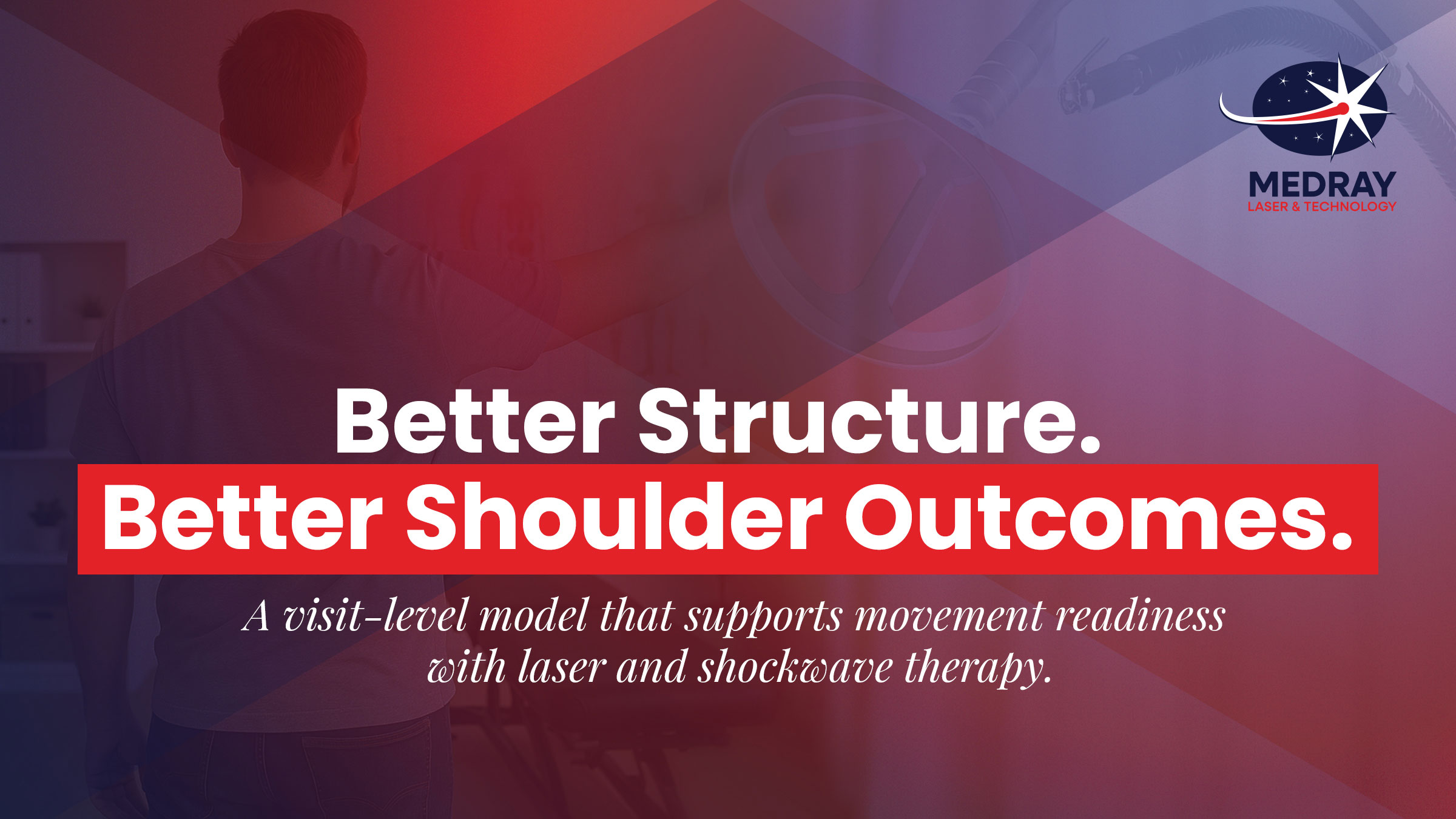What Challenge Does a Painful Arc Present in Rotator-Cuff–Related Shoulder Pain?
Rotator-cuff–related shoulder pain with a painful arc is a common presentation in many clinical settings. Practitioners frequently encounter patients whose discomfort intensifies at a specific angle during forward elevation or abduction, making it difficult to determine when to progress loading, when to modify treatment inputs, and how to maintain a consistent flow from visit to visit.
While some clinics attempt to solve this with separate programs or long protocols, Dr. Chris Proulx, D.C. emphasizes a different approach: a predictable, repeatable visit structure that produces interpretable data every time. Instead of building a separate service, the pathway fits seamlessly into a standard follow-up visit.
This article reframes his clinical approach in a structured, compliance-friendly format and highlights where laser therapy and shockwave therapy may fit within a visit-level decision pathway.
Why Is Setting a Clear Aim for Each Visit Essential?
Each session should begin by establishing a single, specific aim. According to the original pathway, clinicians typically choose one of three goals:
-
Reduce symptom onset during elevation to create enough movement tolerance for exercise volume
-
Confirm tolerance before progressing load
-
Maintain previously achieved gains
This aim should be clearly stated in the visit documentation—ideally in the note header—so the rest of the visit aligns with that direction.
From a clinical operations standpoint, this simple step supports consistency, improves communication across providers, and ensures any assistive interventions such as laser or shockwave remain contextualized rather than serving as standalone programs.
How Should Clinicians Measure the Painful Arc to Ensure Reliable Data?
- The same movement
- With the same arm position
- At the same tempo
- Using the same goniometer method, if applicable
How Do Laser Therapy and Shockwave Fit Into This Visit-Level Pathway?
Instead of using these tools as separate programs, the pathway places them inside a brief, time-bounded intervention block within the visit. This structure protects schedule integrity while creating clear pre- and post-measurements.
-
Laser Application (Regional Input)
Laser therapy may be used regionally across the periscapular and anterior-lateral shoulder region, particularly on days when symptoms feel diffuse and affect movement preparation. Clinicians often select this approach when the goal is to shift symptom onset or ease movement enough to execute the visit’s intended loading plan.
Regulatory Framing
Therapeutic lasers are FDA-cleared for increasing circulation, tissue stimulation, and pain relief. Regional application in the shoulder area aligns with these general indications and may support a comfortable environment for movement preparation. -
Shockwave Application (Focal Input)
Shockwave therapy may be applied briefly and focally to a specific tender zone—often around the greater tuberosity region—when symptoms are clearly localized and provoked by load or pressure. This focal approach allows clinicians to gather immediate feedback when re-testing the painful arc.
Regulatory Framing
Shockwave devices, depending on type and classification, have FDA clearances related to pain relief and improved circulation. The use described here reflects how some clinicians integrate shockwave therapy into movement-focused visits.
Why a Fixed Time Window?
- Has a fixed time limit
- Always ends with the same re-test of the painful arc
- Is chosen based on the visit’s aim and clinical presentation
What Documentation Standards Support This Pathway?
- Any discomfort during neutral arm hanging
- Start/stop times for the intervention block
- The angle of symptom onset after the intervention
- A short descriptor such as “later onset” or “no change”
How Does This Pathway Support Better Clinical Decisions?
By using a single repeated measure and a consistent window for laser or shockwave, clinicians can confidently determine whether to:
- Progress loading (e.g., scapular control work, external rotation exercises, elevation-based training)
- Modify the assistive intervention block for the next visit
- Omit the block entirely when movement readiness is sufficient
Staff benefit from predictable placement, timing, and documentation, reducing variability and supporting clinic efficiency.
In short, this is not a separate program—it is a micro-pathway that integrates seamlessly into a typical follow-up session while supporting reproducible decision-making.
How Does This Approach Support Clinical Efficiency and Patient Experience?
This pathway creates a consistent, repeatable rhythm within each visit. Because the clinician always:
- Sets a clear aim
- Uses one standardized measure
- Applies a time-bounded intervention (laser or shockwave) when appropriate
- Re-tests immediately
- Updates documentation predictably
Explore our Class 4 Lasers and Shockwave Therapy Device
Laser

Explore Medray’s Class 4 Lasers
Medray’s Class 4 therapeutic lasers are designed to support circulation, tissue stimulation, and pain relief through a streamlined, repeatable workflow. Discover how laser therapy integrates seamlessly into busy clinics while providing a contact-free option for sensitive presentations.
Shockwave

Explore Softshock 2.0 (RPW)
Support for consistent, measurable shoulder care delivery
Take the Next Step Toward Structured Shoulder Pain Protocols
Bring clarity and structure to shoulder pain care with standardized visit-level pathways for managing a painful arc. Medray helps clinics integrate laser and shockwave within FDA-cleared parameters—supporting circulation, comfort, and repeatable movement preparation.
Call us at (573) 745-1086 or visit our Contact Us page to schedule a shoulder-focused workflow walkthrough and see how structured, measurable care pathways can elevate your clinic.
Medray Laser & Technology manufactures and distributes FDA-cleared medical devices designed to support circulation, tissue stimulation, and pain relief. Our products are intended for use by licensed healthcare professionals. While clinical research and practitioner experience support the use of laser and radial pressure wave (RPW) therapy in various applications, some uses described in this article may be considered off-label and are not explicitly cleared by the FDA. Patients should consult their healthcare provider to determine the best treatment for their individual needs. The information provided in this article is for educational purposes only and should not be considered medical advice or a substitute for consultation with a licensed medical professional.
Educational content is for licensed healthcare providers and may include discussion of clinical uses not cleared by the FDA. Provided for scientific exchange and not intended as promotional.
The FDA has cleared therapeutic lasers and shockwave devices for increasing circulation, tissue stimulation, and pain relief. Some of the use cases described in this article reflect how clinicians may apply shockwave therapy in practice, based on peer-reviewed research. This information is provided for educational purposes only and does not imply FDA clearance or approval for specific conditions.
